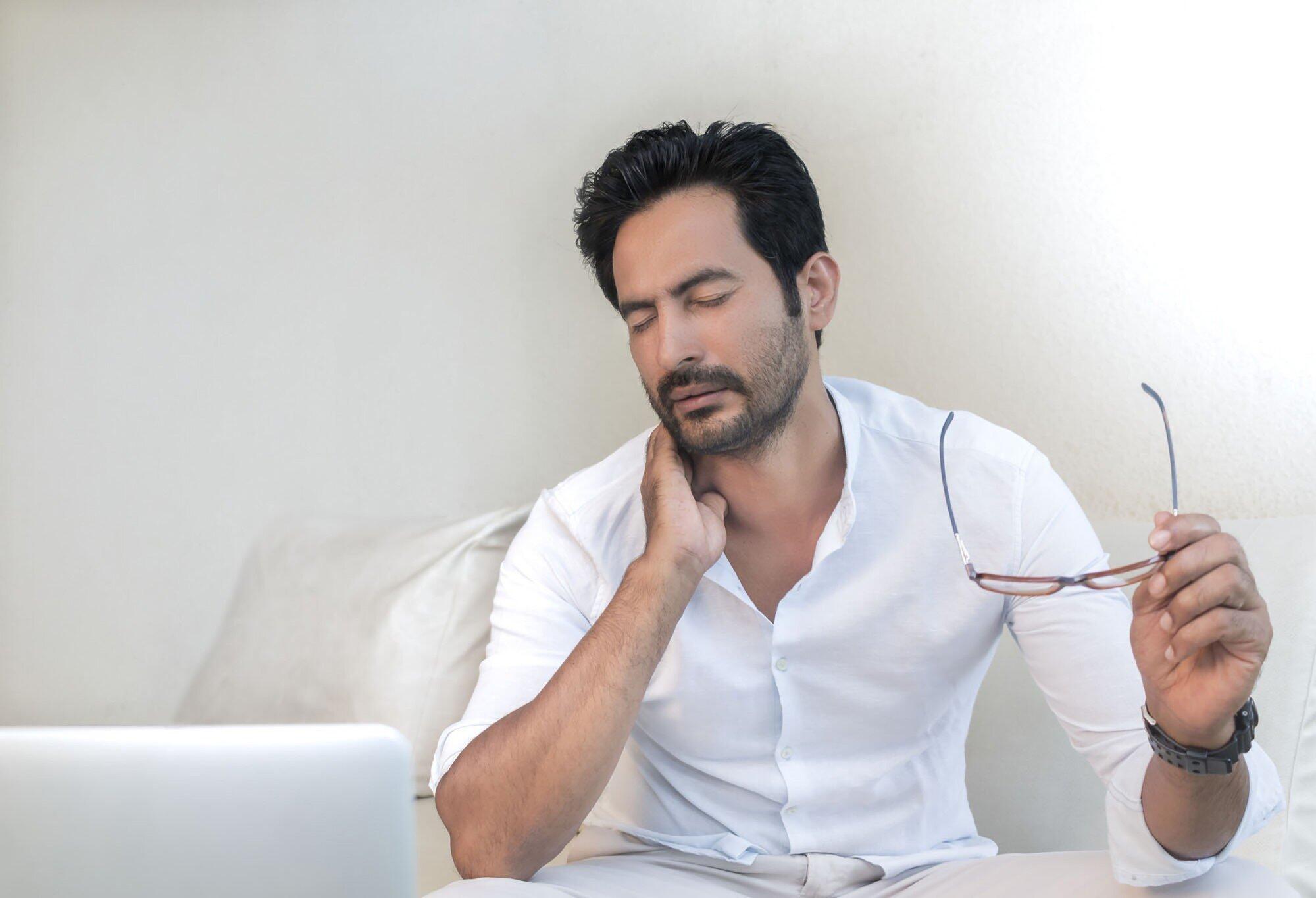HEALTH
Understanding Poxi

Poxi is a viral infection characterized by the formation of itchy blisters on the skin. It is caused by the varicella-zoster virus (VZV), the same virus responsible for chickenpox. Poxi can affect individuals of all ages but is most common in children under the age of 10.
History of Poxi
Poxi has been documented throughout history, with evidence of its existence dating back centuries. The term “pox” has been used to describe various skin conditions caused by different viruses, but in modern times, it primarily refers to the condition caused by the varicella-zoster virus.
Types of Poxi
There are two main types of poxi: chickenpox and shingles. Chickenpox typically occurs during childhood and is characterized by a widespread rash of itchy blisters. Shingles, also known as herpes zoster, occurs when the varicella-zoster virus reactivates later in life, usually in adults over the age of 50.
Causes and Symptoms
Poxi is caused by the varicella-zoster virus, which spreads through respiratory droplets or direct contact with the fluid from the blisters of an infected individual. Once contracted, the virus remains dormant in the body and can reactivate years later, leading to shingles.
Symptoms of Poxi
The symptoms of poxi typically include fever, headache, fatigue, and a characteristic rash of itchy blisters. In chickenpox, the rash usually starts on the face, chest, and back before spreading to other parts of the body. In shingles, the rash typically occurs on one side of the body and is accompanied by intense pain or burning.
Diagnosis
Poxi is usually diagnosed based on clinical symptoms and the appearance of the rash. Laboratory tests, such as viral cultures or polymerase chain reaction (PCR) tests, may be performed to confirm the diagnosis in some cases.
Treatment Options
Treatment for poxi typically focuses on relieving symptoms and preventing complications. This may include antiviral medications to shorten the duration of the illness and reduce the severity of symptoms. Over-the-counter pain relievers, antihistamines, and topical ointments may also be recommended to alleviate discomfort and itching.
Home Remedies for Poxis
In addition to medical treatment, there are several home remedies that may help alleviate symptoms and promote healing. These include oatmeal baths, calamine lotion, cool compresses, and keeping the affected areas clean and dry. It is important to avoid scratching the blisters to prevent secondary bacterial infections.
Prevention Strategies
The best way to prevent poxi is through vaccination. The chickenpox vaccine is highly effective at preventing chickenpox and reducing the risk of shingles later in life. Practicing good hygiene, such as frequent handwashing and avoiding close contact with infected individuals, can also help prevent the spread of the virus.
Coping with Poxis
Coping with poxi can be challenging, especially for those experiencing severe symptoms or complications. It is important to rest, stay hydrated, and take medications as prescribed. Seeking support from friends, family, or a healthcare professional can also help alleviate stress and anxiety.
Support Systems
Having a strong support system in place can make a significant difference in coping with poxi. Friends and family members can provide emotional support and practical assistance with daily tasks. Support groups or online forums may also offer valuable resources and encouragement for individuals dealing with poxis.
Mental Health Considerations
Dealing with a viral infection like poxis can take a toll on mental health. Feelings of frustration, isolation, and anxiety are common, especially for those experiencing severe symptoms or complications. It is important to prioritize self-care and seek professional help if needed to address any mental health concerns.
Conclusion
Poxi is a viral infection caused by the varicella-zoster virus, which manifests as chickenpox or shingles. Understanding the causes, symptoms, and treatment options for poxi is essential for managing the condition effectively and preventing complications. By following preventive measures and seeking appropriate medical care, individuals can reduce the impact of poxi on their health and well-being.
HEALTH
Top 4 Natural Ingredients Commonly Used for Pain Relief Safely

Many people live with pain every day, whether it’s from sore muscles, joint problems, or long-term conditions like arthritis. While over-the-counter medicine can help, it’s not always safe to use it often.
The good news is that nature offers some powerful and safe options to relieve pain. Here are four natural ingredients people commonly use to feel better without relying on harsh chemicals. Read on.
1. Turmeric
Turmeric is a bright yellow spice often used in cooking, especially in Indian dishes. But it’s more than just a flavorful ingredient – turmeric is known for fighting inflammation, which causes pain in the body. Its main compound, curcumin, helps reduce swelling and pain, especially in joints.
Turmeric is safe for most people and can be taken daily in small amounts. It’s available as a powder, tea, or supplement.
To help your body absorb curcumin better, it’s often taken with black pepper, which contains a compound called piperine. Together, they work even better.
Research and explore some new ingredients for relieving pain. There are so many shops open now that can accommodate your inquiry.
2. Ginger
Ginger is another common kitchen ingredient that also works as a natural pain reliever. It has compounds called gingerols and shogaols, which help reduce inflammation and ease discomfort. People often use ginger for joint pain, sore muscles, and menstrual cramps.
You can add fresh ginger to food, drink it as tea, or take it in capsules. Studies show ginger can work just as well as common pain medicine like ibuprofen, but with fewer side effects.
3. Willow Bark
Willow bark comes from the bark of willow trees and has been used for centuries to treat pain. It contains a natural chemical called salicin, which acts a lot like aspirin. People use it to ease headaches, lower back pain, and joint problems like arthritis.
Willow bark is available in tea, capsules, or liquid form. It works well for many people, but if you’re allergic to aspirin or take blood thinners, you should avoid it. It’s always a good idea to talk to a doctor before starting something new.
4. Capsaicin
Capsaicin is what makes chili peppers hot. But when it’s used in creams or patches on the skin, it can help stop pain. It works by lowering the amount of a chemical in your body (called substance P) that sends pain signals to the brain.
Capsaicin is great for nerve pain, arthritis, and even after surgery. Some people feel a slight burning or tingling at first, but this usually goes away. Since it’s used on the skin and not taken by mouth, it has fewer side effects.
Start Using These Ingredients for Your Pain
Natural pain relief options like turmeric, ginger, willow bark, and capsaicin can make a big difference for people who want safe and gentle ways to manage pain. While these remedies come from plants, they still work powerfully.
Just remember – it’s always smart to check with your doctor before adding any new supplement or treatment. With the right approach, natural ingredients can help you feel better, safer, and effective.
If you want to read more articles, visit our blog.
HEALTH
Top 4 Benefits of Memory Care Services for Seniors

What happens when a loved one begins to struggle with memory loss or dementia? How can families provide the right care without feeling overwhelmed?
Watching someone forget names, dates, or even daily routines can be heartbreaking. Many families face these challenges alone until it becomes too much.
That’s when professional help becomes not just helpful, but necessary. Memory care services are designed specifically for seniors facing cognitive decline.
In this post, learn about four major benefits of memory care services for the elderly and how they can make life better for everyone involved. Read on!
- Safe and Supportive Living Environment
For seniors who have memory problems, safety becomes very important. Memory care communities are designed with safe layouts to keep people from getting lost.
Doors are often locked or watched to make sure that residents don’t leave by accident. Rooms and hallways are set up to make things easier to find.
The staff is trained to act quickly in case of an emergency. There are also clear signs and visual cues to help older people find their way.
There are extra safety measures in place, like alarms and cameras. These features make the home a safe and comforting place for seniors to live with pride.
- Expert Care from Trained Professionals
Memory care teams include nurses, aides, and specialists trained in dementia care. These professionals understand how to respond to memory loss symptoms with kindness and patience.
They create daily routines to help residents feel calm and confident. Medical needs are managed with regular checkups and medication support.
Behavioral changes are handled with skill, avoiding frustration for the resident. Families can rest easier knowing their loved ones are in capable hands.
Memory care staff also receive ongoing training to stay up to date. The care provided is focused, consistent, and full of compassion.
- Engaging Activities and Social Connection
Boredom and loneliness can make memory problems worse. That’s why daily activities are a big part of memory care.
Music, games, art, and gentle exercises are all included. These activities are designed to match each senior’s abilities.
Social events give residents a chance to connect and smile. Group programs help improve memory and boost mood.
Personalized activities also encourage old hobbies and new interests. These moments of joy add color and purpose to everyday life. In short, memory care services for seniors offer more than just health support-they bring happiness, too.
- Peace of Mind for Families and Caregivers
Taking care of a loved one with memory loss can be exhausting. Many families try to manage on their own before realizing they need help.
Memory care relieves this burden in a big way. Families no longer have to worry 24/7 about safety or medical needs.
Regular updates keep them informed and included. Knowing their loved one is safe and cared for brings deep relief.
It also allows them to return to being family, not just caregivers. This peace of mind is priceless. Memory care truly supports both seniors and those who love them.
Why Memory Care Services Matter
Memory care services for the elderly provide the safety, support, and attention they truly need. With trained professionals, tailored activities, and a secure setting, residents experience a better quality of life.
Families benefit as well, gaining peace of mind and relief from daily caregiving stress. These services offer real solutions for a difficult journey. They bring hope where there was once worry.
Choosing memory care is a step toward comfort, dignity, and connection. Seniors deserve compassionate care that fits their unique needs.
HEALTH
Locum Tenens: A Strategic Advantage for Modern Hospitals

Healthcare organizations always search for new ways to improve efficiency and patient care. One innovative way to enhance efficiency is by addressing staff shortages. Many modern hospitals address this problem by partnering with a reliable staffing agency with a pool of competent healthcare providers.
Locum tenens providers help healthcare organizations respond to fluctuating patient volume to ensure long-term success. But is this the only benefit of using locum tenens providers to a healthcare organization? This article will explain how locum tenens offers a strategic advantage in modern hospitals.
Realize Unclaimed Hospital Revenue
When a hospital receives more patients than the available staff can handle, some patients switch to competitors. This results in unclaimed revenues and a negative reputation. Instead of referring regular cases to other hospitals due to staff shortage, healthcare facilities can use locum tenens providers to solve staffing challenges.
For example, Locumsmart supports hospitals by connecting them with competent healthcare professionals for temporary assignments. They help hospitals operate efficiently with peak patient volume, realizing unclaimed revenue.
The leading locum tenens agencies have a database of skilled nurses, doctors, physiotherapists, surgeons, cardiologists, oncologists, among other healthcare providers. Therefore, hospitals can always partner with the staffing agency to access medical specialists to care for patients.
Reduce Staff Recruitment Costs
Organizations spend much time and money advertising open positions, organizing interviews, and onboarding new employees. However, they can save time and money by working with a locum tenens agency. The agency has access to skilled professionals with relevant credentials for different positions. Since many locum tenens providers have worked in many healthcare facilities, they require minimal guidance to fill staffing gaps.
Healthcare organizations do not spend too much time reviewing resumes or interviewing candidates. Instead, the staffing agency connects them with competent healthcare providers ready for short-term positions. Therefore, the hospital will not experience inconveniences when there is high patient volume or permanent providers are on vacation or medical leave.
Reduce Burnout and Increase Employee Retention
When a hospital receives more patients due to outbreaks or accidents, physicians might have to work more hours to treat those patients. As a result, many physicians experience burnout at some point due to staff shortages. Hospitals that incorporate locum tenens minimize the risk of burnout.
The permanent healthcare providers improve work-life balance and enjoy a regular work schedule. When locum tenens providers are on standby to replace permanent staff after regular duties, the permanent employees get time to recharge and rejuvenate. They also feel valued, which could lead to job satisfaction and employee retention.
Improve Patient Care
The primary purpose of establishing a healthcare facility is to treat and care for patients. So, hospital management should strive to ensure their facility provides continuous patient care regardless of staffing shortages or other similar challenges. Engaging locum tenens providers reduces waiting time and improves patient outcomes, even when a hospital receives many patients within a short time.
When a hospital has enough staff and can access more if necessary, patients receive the attention needed. They also feel valued when they meet competent staff who are ready to treat them and promptly address their needs. Therefore, locum tenens providers improve patient care and patient satisfaction.
These are enough reasons for healthcare organizations to consider working with locum tenens providers. However, health facilities should choose one of the leading agencies for easy access to a pool of competent physicians. It is also important to ensure mutual understanding between the providers and the hospital management to avoid inconveniences.

 Cartoon1 year ago
Cartoon1 year agoUnlocking the Potential of Nekopoi.care: A Comprehensive Guide

 Game1 year ago
Game1 year agoExploring Aopickleballthietke.com: Your Ultimate Pickleball Destination

 BUSINESS1 year ago
BUSINESS1 year agoWhat Companies Are In The Consumer Services Field

 BUSINESS1 year ago
BUSINESS1 year agoUnraveling the Mystery of 405 Howard Street San Francisco charge on Credit Card

 HOME IMPROVEMENT1 year ago
HOME IMPROVEMENT1 year agoVtrahe vs. Other Platforms: Which One Reigns Supreme?

 TECHNOLOGY1 year ago
TECHNOLOGY1 year agoThe Guide to Using Anon Vault for Secure Data Storage

 ENTERTAINMENT11 months ago
ENTERTAINMENT11 months agoUnderstanding Bunkr Album: A Comprehensive Guide

 ENTERTAINMENT1 year ago
ENTERTAINMENT1 year agoThe Epic Return: Revenge of the Iron-Blooded Sword Hound
















